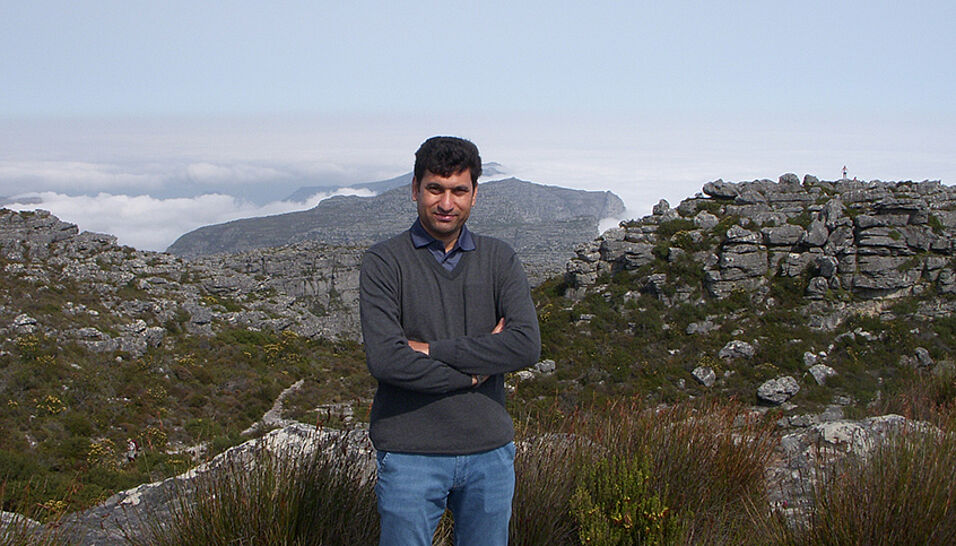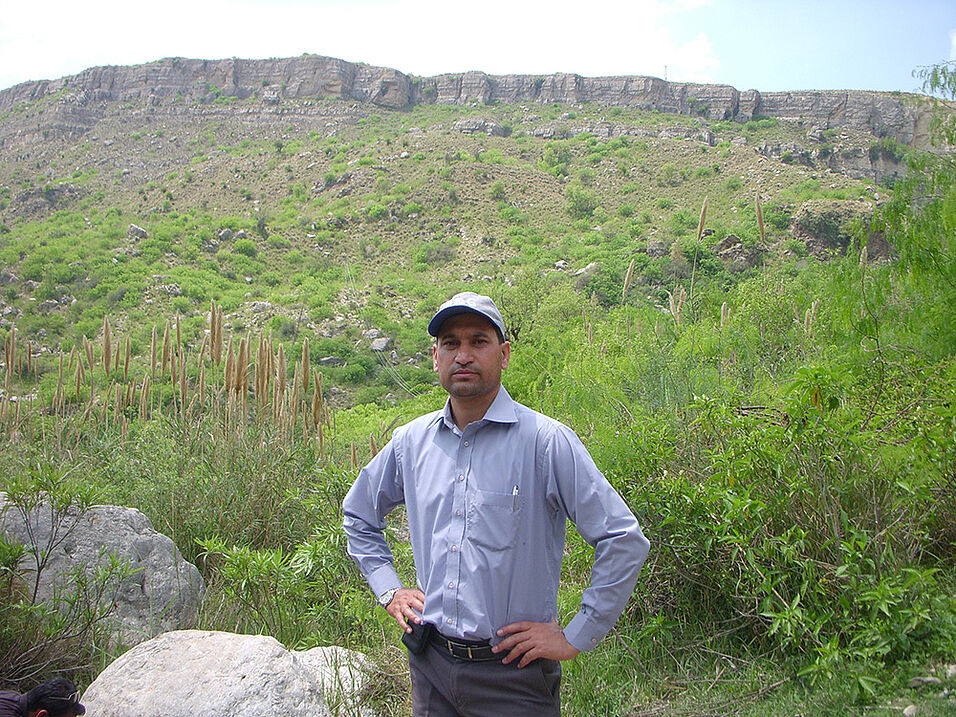What is fascinating about your research area?
The change in river-water colour from crystal clear in winter to muddy, dark brown during the summer monsoon in the foothills of the mighty Himalayas in Pakistan has been my observation since childhood. Playing in the sand and hunting for beautiful garnets and quartz crystals on the banks of River Swat near my hometown were my childhood hobbies. These childhood experiences and hobbies created my interest in geology, especially clastic sedimentology.
Clastic sediments preserve the story of rock’s response to weathering, erosion, transportation, and climate change in the language of sedimentary structures and features and geochemical signals in strata deposited in various sedimentary basins. These sediments provide evidence for historical paleoclimatic fluctuations, sea-level oscillation, global warming, glaciation, mass extinction events, and the Earth’s response during such events. Using the concept “the present is the key to past”, such events in deep time can be used as guidelines to understand the present-day climate change and global warming thereby allowing us to suggest mechanisms for countering global climate deterioration and achieve climatic sustainability.
Which central message should your students remember?
My course will be an opportunity for translating the geochemical composition of sedimentary rocks into proxies for finding answers to questions including: How were the parent rocks exposed in the source area? What were the paleoclimatic and weathering conditions at the sediment generation sites, transport pathways, and depositional sites? How do sediments provide clues for their tectonic settings? What are the consequences of interference in the Earth’s system?
Why did you decide to do research and teach at our Faculty?
My collaboration with the Department of Geology, University of Vienna started with my PhD and was followed by multiple collaborative research projects. As a PhD graduate, I learned the importance of sedimentary rocks in the understanding of the Earth’s System and global change. The department has impressive research facilities, a reputed research team, and a strong global network. I am bringing my research experience and expertise in sediment geochemistry so that we can progress as a team.
Which three publications characterise your work?
- Iqbal, S., Wagreich, M., Bibi, M., Jan, I. U., and Gier, S. (2021). Multi-Proxy Provenance Analyses of the Kingriali and Datta Formations (Triassic–Jurassic Transition): Evidence for Westward Extension of the Neo-Tethys Passive Margin from the Salt Range (Pakistan). Minerals, 11(6), 573.
This article explains the development of the Neo-Tethyan passive margin during the Triassic-Jurassic time interval in the so far unexplored Salt Range area of Pakistan.
- Bibi, M., Wagreich, M., and Iqbal, S. (2020). Trace metals as markers for historical anthropogenic contamination: Evidence from the Peshawar Basin, Pakistan. Science of the Total Environment. (703) 134926.
This article presents new data for anthropogenic interference into the Earth’s System and the concept of the early Anthropocene. It presents data from sediments and archaeological sites in an attempt to link geology and archaeology to understand the anthropogenic contribution to the Earth’s System.
Iqbal, S., Wagreich, M., Jan, I, U., Kuerschner, W. M., and Gier, S., (2019). Hot-house climate during the Triassic/Jurassic transition: The evidence of climate change from the southern hemisphere (Salt Range, Pakistan). Global and Planetary Change (172) 15–32.
This article uses outcrop data from the Salt Range, Pakistan, in the first such attempt to present outcrop data from the southwestern margin of the Neo-Tethys for climate change across the Triassic-Jurassic Boundary interval.
Thank you & welcome to our Faculty!
- Shahid Iqbal, Assistant Professor at the Department of Earth Sciences of the Quaid-i-Azam University Islamabad in Pakistan, is studying Paleoclimates and Paleoenvironments during Permian to Jurassic time on the NW passive Tethyan margin of the Indian Plate. He is specialized in using framework composition, sediments geochemistry, bulk mineralogical composition using XRD, clay mineralogy, and heavy minerals analysis. Currently, he is working on the Triassic-Jurassic transition and paleoclimatic fluctuations during the Pleistocene-Holocene glaciation-deglaciation and early Anthropocene.
- Working group / host professor: Michael Wagreich


